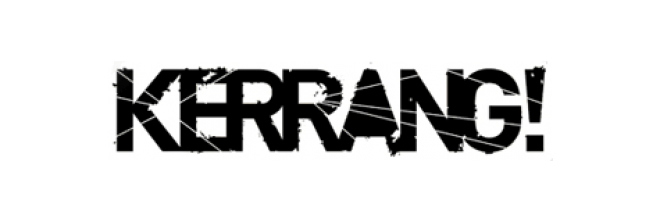IPC Media is a major print publisher that owns a large variety of magazines, such as TV Weekly, Marie Claire and NME. As from 2016, the circulation figure for NME magazine is 307,217.
ISSUU digital publishing is an online publishing platform for different types of magazines, catalogues and papers.
FACT Magazine covers a wide range of UK, US and international music and youth culture, with a particular focus on pop electronic, rap and experimental artists. It was originally published as a print magazine from 2003 onwards, but went digital in 2007. FACT Magazine is published by VF publishing.
Under the Radar is an independently published music magazine founded in 2001. It also has a website that features web-exclusive reviews, news and interviews. As from 2016, Under the radar magazine has a circulation figure of 65,000.
The Fly Magazine was published by MAMA & Company until 2014, where it released its final copy before ceasing publication. The magazine started as a listings leaflet in Camden, North London, for the Barfly music venue on Chalk Farm Road. In 1999, it went national. It was A5 sized, and was distributed around record shops, bars and venues around the United Kingdom. The magazine had a review section featuring new releases and live concert reviews. The remainder of the magazine typically featured new bands alongside more established acts in the pages of its new bands section, titled 'OnesToWatch', which was sponsored by Levis until 2010.
The Fly Magazine relaunched its website in April 2008, which contained a virtual magazine section and online archive of previous issues. In Summer 2008, a new name for the website was launched, The Courtyard, in which bands were filmed playing stripped-down versions of songs in the courtyard outside The Fly Magazines office. Some of the bands/artists who performed are Everything Everything (Indie Rock), The Cribs (Indie Rock), Black lips (Punk/Indie rock), The Kooks (Indie Pop) and Jake Bugg (Indie Folk). The sessions were renamed The Fly sessions in 2012, where the website was then relaunched again.
In 2008, the magazines circulation increased to 105,212. However, by mid-2013, its readership had almost halved to 55,580. The Fly Magazine received its funding through advertisement revenue and subscribers.



All of these magazines receive their funding from advertisements and customers; either from subscriptions or over the counter.
Key differences between online and print music magazines:
- Cost - Overall, most online media is free and usually less expensive than viewing print media.
- Ad revenue - It was reported in September 2012 that revenue from print advertisements is falling while online ad revenue grows. However there are advertisers who prefer print. In many cases, a marketers advertisements spread across both print and online media.
- Environmental impact - Print publishers pollute more from the making and distributing of their product. However, online publishers pollute more from requiring readers to use energy while online, and to use devices that are manufactured in facilities which emit heavy amounts of carbon into the atmosphere.
- Space - Online magazines have an infinite amount of pages, which means space is not an issue. With print magazines, the length of the articles has to be in accordance with the page length.
- Appeal - Online music magazines don't tend to carry the same amount of appeal as print music magazines. Many people prefer to hold magazines and enjoy the ability to take them anywhere e.g on a train, aeroplane etc. Also, many print magazines usually offer some kind of free product that will attract the audience and make them want to buy the magazine.
- Attention - When looking at online articles, people tend to scan over information rather than take the time to read it carefully.
- Interactivity - With online magazines, there is more opportunity to interact with the magazine. For example 'Letters to the editor' allows the audience to tell the magazine their views and opinions about certain topics. This also happens with print magazines, but with online magazines communication is more instant and accessible for the audience.
- Layout - Print magazines are only able to be designed in a way that fits to paper. Whereas an online magazine can afford to change the layout to some extent - it can incorporate a variety of extra features such as moving images and videos that could not be found within a print publication.
A print music magazine would be able to promote a online music magazine in the way that it could include social media features that would encourage the audience to go online. For example, for a music magazine promoting a concert, they might include a link to an online magazine that shows behind the scenes footage and exclusive interviews with the band members. This can also be used for interactivity, as the magazine may have interactive features that encourage the audience to go online and vice versa.
Examples of Other Indie Music Magazines and their Publishers:
- The Wire (Independent magazine so independently published)
- Mojo Magazine (initially published by Emap, and by Bauer since January 2008)




Excellent research - detailed and thorough
ReplyDelete